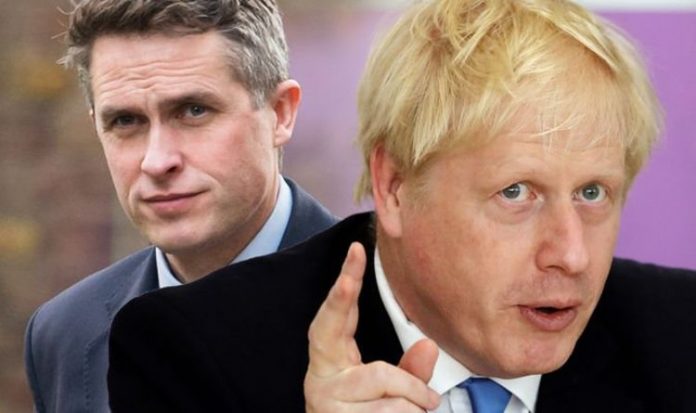A-level and GCSE students in England have now been given grades estimated by their teachers, rather than by an algorithm, after a Government U-turn. The decision came after about 40 percent of A-level results were downgraded by exams regulator Ofqual, which used a formula based on schools’ prior grades, sparking nationwide uproar. Ofqual chair Roger Taylor and Education Secretary Gavin Williamson apologised for the “distress” caused.
In a statement, Mr Williamson acknowledged the “extraordinarily difficult” year for students, after exams were cancelled due to the coronavirus pandemic.
He said the Department for Education had worked with Ofqual to design “the fairest possible model” but it had become clear that the process of awarding grades had resulted in “more significant inconsistencies than can be resolved through an appeals process”.
He added: “I am sorry for the distress this has caused young people and their parents but hope this announcement will now provide the certainty and reassurance they deserve.”
Despite many calling for the Education Secretary to resign, Downing Street maintains the Prime Minister has full confidence in him.
This is not the first time the Government has done a U-turn.
According to a recent report by Politico, since Mr Johnson won a huge 80-seat majority in the December general election, there have been at least five about-faces.
On May 21, only a day after telling MPs that maintaining a controversial visa surcharge for overseas health care staff was “the right thing to do”, Number 10 announced the policy had been scrapped.
The Prime Minister had faced increasing pressure from MPs across the political spectrum to exempt those working for the NHS from the charge of £400.
JUST IN: House of Lords revolution: Gisela Stuart sets blueprint for shake-up
Former Health Secretary Jeremy Hunt was the most prominent critic of Mr Johnson, calling for the charge to be dropped.
On June 4, hundreds of MPs lined up to vote while maintaining social distance after House of Commons leader Jacob Rees-Mogg came up with the plan as a way to replace the remote voting that had been used since the pandemic hit.
However, not only did the incredibly long line look ridiculous but the system was also controversial.
Mr Rees-Mogg had initially refused to allow remote voting for members who could not attend parliament due to medical issues or because they were too old to stand in line for hours.
Despite telling MPs that “voting while on a sunny walk or watching television does democracy a disservice,” two days later plans to allow members to vote by proxy were approved.
Mr Williamson was also the protagonist of another Government U-turn back in June, when he abandoned plans to fully reopen all primary schools for all pupils before the summer holidays.
DON’T MISS:
China’s ‘fearsome threat’ picked apart by Cummings [INSIGHT]
Philip Hammond’s Brexit lobster lunch with George Osborne exposed [REVEALED]
Poland ‘problematic member’ in EU’s fight for future [EXCLUSIVE]
The plan had initially been set out in the Government’s coronavirus recovery strategy, published in May, but teachers, unions and politicians expressed concern that the deadline was too soon and that the coronavirus reproduction rate was still too high in parts of the country.
Mr Williamson formally dropped the plan, which he described as an “ambition,” in early June and said the target had changed to welcoming all children back in September.
The other volte-face happened in early May when Health Secretary Matt Hancock announced that a nationwide contact-tracing app would have been released in a matter of weeks.
In June, the Government announced the postponement of the launch so that Google and Apple could overhaul it with their own technology.
The app is still not available.
Moreover, last month’s announcement of an all-out ban on the Chinese telecoms giant’s 5G gear represented a major volte-face not just on Huawei but also on the UK’s China policy.
Earlier in the year, Mr Johnson had decided to allow the Chinese telecoms firm to sell a limited amount of equipment for parts of the UK’s 5G network, but after relentless pressure from US President Donald Trump, the Government took the decision to ban Huawei products.







